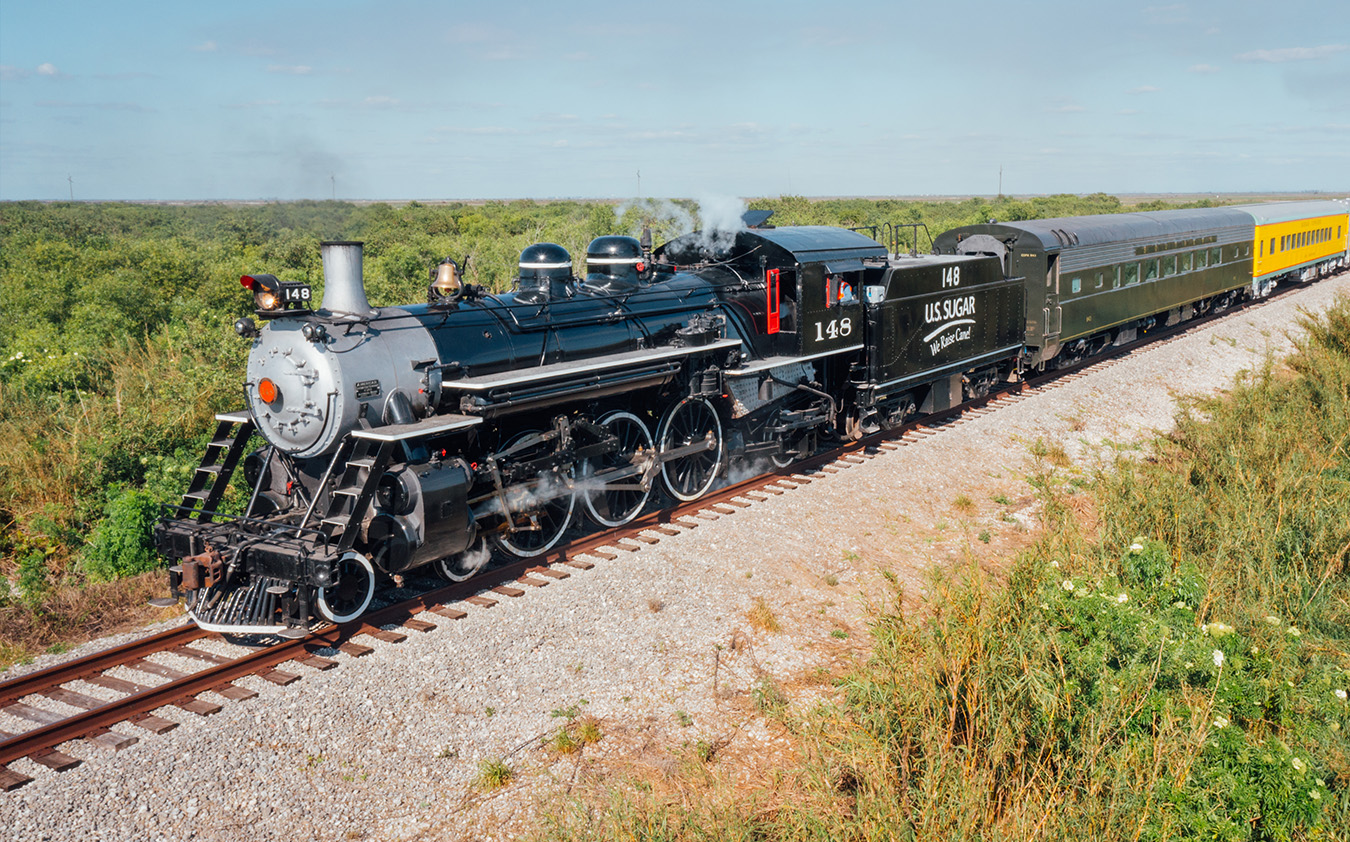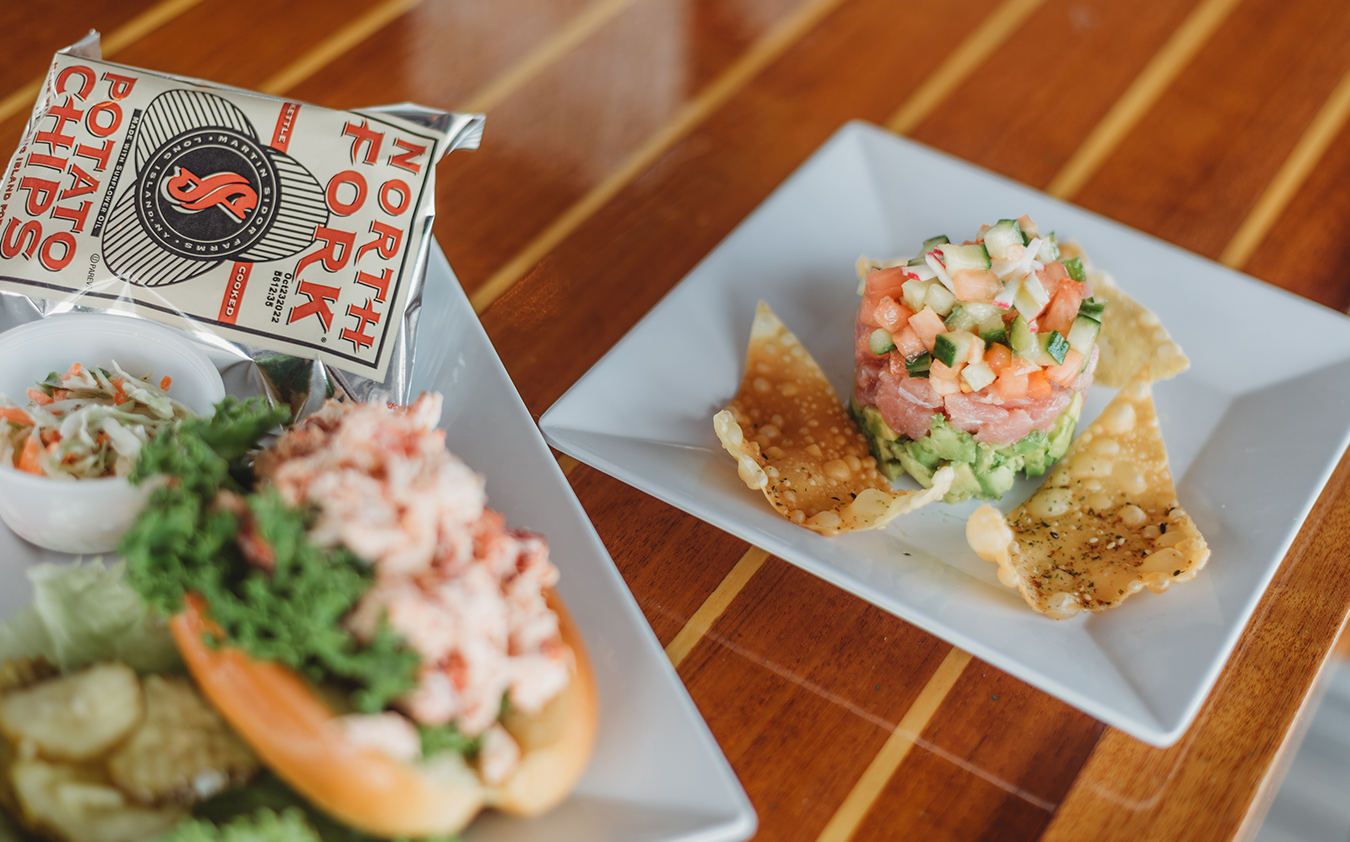
In Florida, an Iron Horse Rides Again

There’s a new, old train in the Sunshine State —
and it’s ready to take you for a ride.
Drive an hour east of Wellington and you’ll find a horse of a different color.
 After a half-century’s sojourn in parts north and west, an indigenous steam locomotive is back on the high iron in the Sunshine State, whisking passengers on a journey through time and Florida’s heartland.
After a half-century’s sojourn in parts north and west, an indigenous steam locomotive is back on the high iron in the Sunshine State, whisking passengers on a journey through time and Florida’s heartland.
This steel thoroughbred is Florida East Coast No. 148, built by the Richmond Works of the American Locomotive Company (ALCO) in 1920. Owned for the second time in its history by U.S. Sugar Corporation, the engine recently returned to service as the Sugar Express, a new excursion program across the company’s extensive rail system, stretching some 120 miles around Lake Okeechobee from Fort Pierce to Sebring.
Since its public debut two years ago, the storied steamer has ran on an increasingly regular schedule. On May 12th and 13th — the latter is National Train Day — she’ll head farm-to-table excursions with the Henry County Cattlemen’s Association, pairing a two-hour sunset ride and a ribeye dinner with all the locally-sourced trimmings. That’ll follow with family-friendly ice cream trains on the 13th and 14th, a short jaunt from Clewiston to the Miami Canal locks and back. June brings the return of the Lake Placid Limited, a popular full-day excursion to the place Readers Digest called “America’s Most Interesting Town.” Riders will get 2-½ hours to explore its eclectic shops, vibrant murals, famous caladium plants, and more. Holiday trips are expected to close out the year.
Because the Sugar Express isn’t a closed-circuit tourist operation, 148 gets to really stretch its legs, doing the job it was built for in the state it was built to do it in. Passengers ride comfortably in a consist of vintage, air-conditioned coaches of mixed provenance. A converted baggage car has open sides, letting riders see, hear, and smell the engine work while catching some fresh air. It’s one of few opportunities left in America to experience mainline steam at track speed.

The Sugar Express runs a variety of trips throughout the year.
Most depart from Clewiston, on the south shore of Lake Okeechobee.
It couldn’t have been a sweeter homecoming. Back in the day, the high-stepping 4-6-2 “Pacific” type, with its big 68-inch drive wheels, charged down Henry Flagler’s mainline from Jacksonville from Key West, the route credited with developing the state’s entire East Coast. After the 1935 hurricane washed out the famed “Overseas Railroad,” the FEC cut its losses and began selling off surplus motive power, some of which eventually went to U.S. Sugar. Sister engines 113 and 153, now preserved at the Gold Coast Railroad Museum in Miami, were among the first to go, with 148 joining the ranks just four years before diesel replacements arrived. As for the FEC, it’s still around, both as a freight railroad and the parent company of Brightline — America’s only privately-owned passenger train, which runs on the same right-of-way as 148 once did.

A Pacific-type locomotive — either 148 or a sister engine — crosses Seven Mile Bridge on the FEC’s Key West Extension, dubbed the “Overseas Railroad.” Remnants of the doomed line, which washed out in the Labor Day Hurricane of 1935, were used to construct the highway that followed.
But “dismals” hardly had the allure of steam engines, and it didn’t take long for people to start missing them. By the mid-60s, that nostalgia stoked a national resurgence of the things for a new purpose: hauling tourists. So full-steam-ahead were the times that even the Long Island Rail Road let a group of rail enthusiasts, led by Dan’s Papers editor (and namer) Ron Ziel, float an old hoss over from New Jersey and run fan trips from Jamaica, Queens, to Montauk, dodging dashing commuter trains along the way.
Spared from the scrapper’s torch after its first career, 148 eventually found its way into the hands of New Jersey entrepreneur Sam Freeman, who delighted locals running the engine on local tourist lines, namely the Black River & Western and Morris County Central, and even up today’s NJ Transit tracks through Bergen County. By 1977, though, she was thoroughly worn out, passing through owners in Connecticut, then Michigan, and finally Colorado in need of work that never happened. Equipment brokers had it listed for years, with few bites. But in 2016, U.S. Sugar bought it back, enlisting some of the country’s top restoration experts, led by FMW Solutions, to overhaul the engine in their Clewiston shop. Four years later, 148 was back under steam just in time for its centennial, making test runs with the first cane loads it’d hauled in 64 years.
Today, 148 is one of the “greenest” steam locomotives on earth. Since returning to service, it has run exclusively on waste vegetable oil, a conversion that — from a mechanical standpoint — required no significant historically-inaccurate modifications. Like many engines that operated in the southeast and west, speedy 148 was built to be oil rather than coal-fired, boiling water into steam all the same with an atomized spray. “Bunker C” crude became a popular fuel for railroads after 1900 in areas where coal was neither economical nor readily available, and often where rails met the sea — the Brooklyn Eastern District Terminal Railway (BEDT), on the Williamsburg waterfront, shared a common refueling facility with ships burning the same thing. Rather than throwing scoops from the tender, a comfortably-seated fireman controls the fire with a brass handle on a notched quadrant and a series of valves called a manifold. The setup also burns cleaner, with the fireman aiming for no more than a light gray haze at the stack. Any puffy white stuff you see is just evaporated water unless it’s a hollow white smoke, which means you’ve lost your fire. A seasoned fireman is constantly watching the engineer for cues and throttle adjustments to avoid the exhaust draft — those “chuff-chuff” sounds — snuffing out the flames. Most oil-burners operating these days have long since ditched viscous bunker oil for a menu of thinner derivatives, eliminating the need for tank and line preheaters to prevent clogs.
A peek into 148’s cab as the engine “highballs” out of Clewiston. At the throttle is Scott Ogle, the line’s operations manager; firing is FMW Solutions’ Natasha Bettis, a seasoned veteran of steam operations across California, Colorado, and beyond.
And there’s more heading to the stable. U.S. Sugar recently acquired Atlantic Coast Line No. 1504, a longtime display in Jacksonville, as the latest addition to the Sugar Express fleet. A rolling ASME landmark, it’s the sole surviving member of its class, a standardized design by the U.S. Railroad Administration (USRA) from the brief period when rail carriers were nationalized during the First World War. 1504 is presently being restored in Chattanooga, Tennessee. Go ahead — sing the song.





